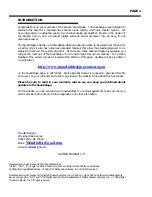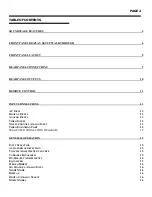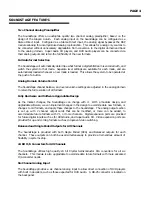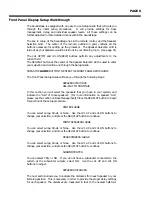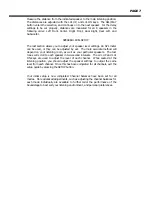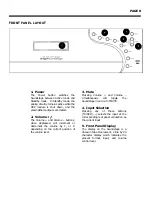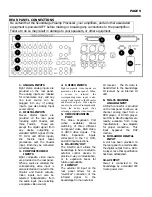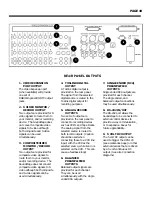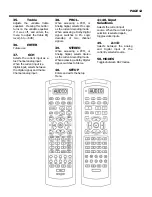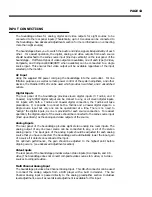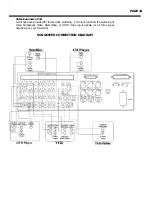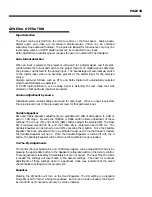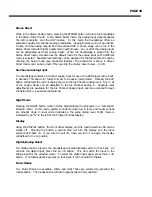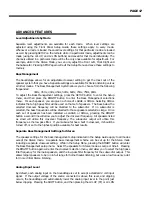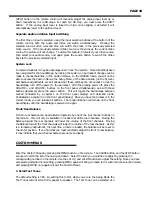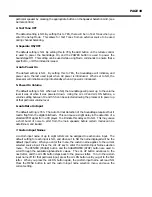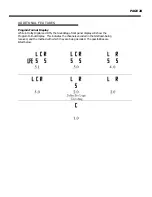
PAGE 5
Combination Digital Domain/Analog Domain Bass Management
The Soundstage utilizes an advanced system for Bass Management that allows the system to
retain the full dynamic range of the signal when accommodating any loudspeaker system. High
pass and low pass crossover filters, and bass summing to the subwoofer is performed in the
digital domain. This allows for more precise crossover filters. In a system that does not utilize a
subwoofer, the low frequency signals (including the LFE channel in Dolby Digital, and DTS) is
combined with the large speakers in the system in the analog domain. This eliminates any need
for digital domain attenuation when these signals are combined. Processors that perform this
function in the digital domain (which constitutes the majority of processors on the market) must
attenuate the channels to avoid overload in the DSP processor. This results in a loss of dynamic
range which can greatly effect the sound quality.
Analog Domain Dialog Normalization
To retain the same overall level from Dolby Digital, regardless of the source, Dolby requires that
all Dolby Digital processors perform Dialog Normalization. The Soundstage has the unique ability
to perform this normalization in the analog domain. If this function were performed in the digital
domain the result would be a loss of dynamic range due to attenuation in the DSP processor.
Adjustable Crossover Point
The Soundstage allows you to choose between Large and Small speakers, for each set of
speakers (Front, Rear, and Center) and to adjust the crossover frequency that these small
speakers utilize. There are nine different crossover frequencies to choose from. Separate
crossovers can be selected for Stereo mode, and Surround modes.
Separate Level Settings for Each Mode
Through the front panel setup guide, the channel balance for every mode can be set. For more
precise setup, channel balances can be adjusted individually for each mode. These levels are
automatically loaded whenever a new mode is loaded.
Speaker Selection Grid
The center portion of the remote control is laid out to represent an overhead view of your
speaker system (See page 21) With this lay out, it is easy to access each speaker during setup
without having to constantly focus on the remote control.
Individual Selection of Audio and Video Sources
With the push of a button, the audio and video -can be selected independently of each other.
This allows you to watch one source, while you listen to another without any complicated setup
menus. By first selecting your video source, and then selecting your audio source, pressing the
audio source a second time will switch the video signal back to the previously selected source.
Pressing the audio source again will switch the video output back to the original source.

